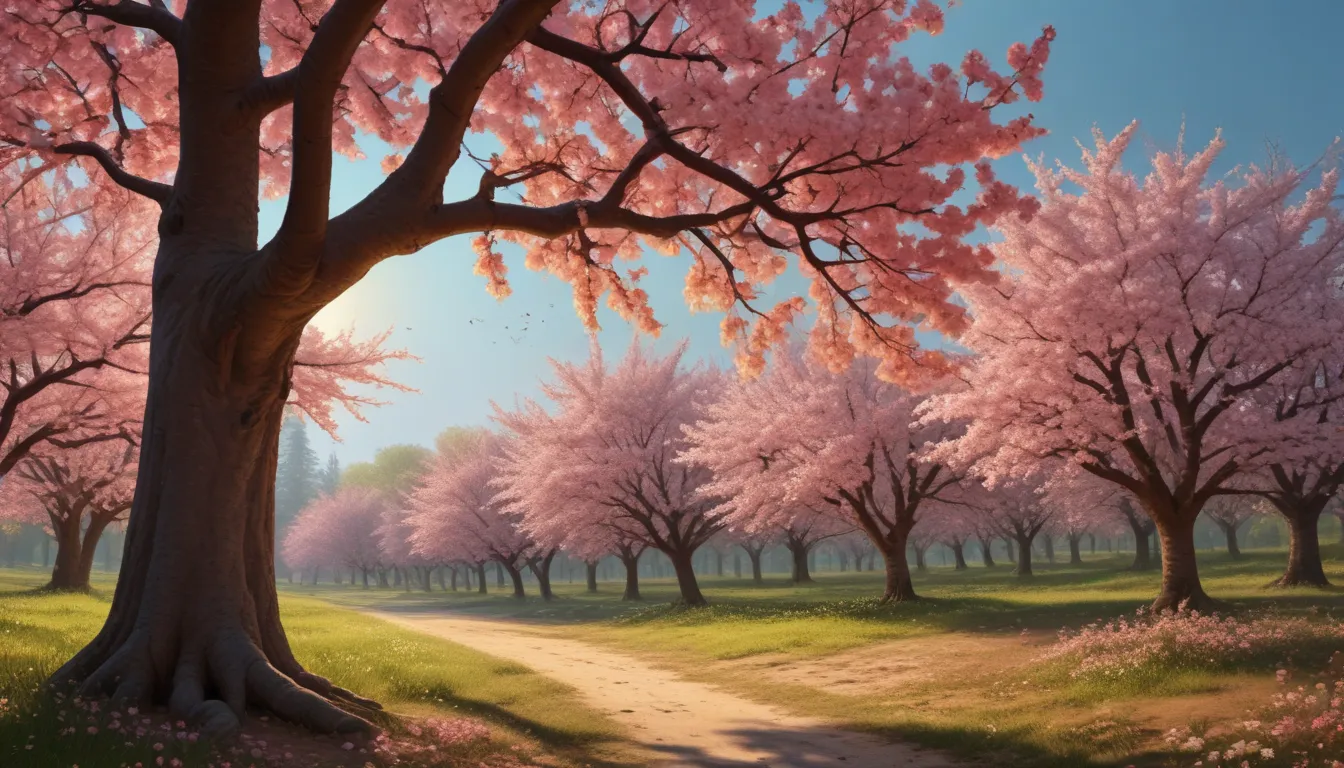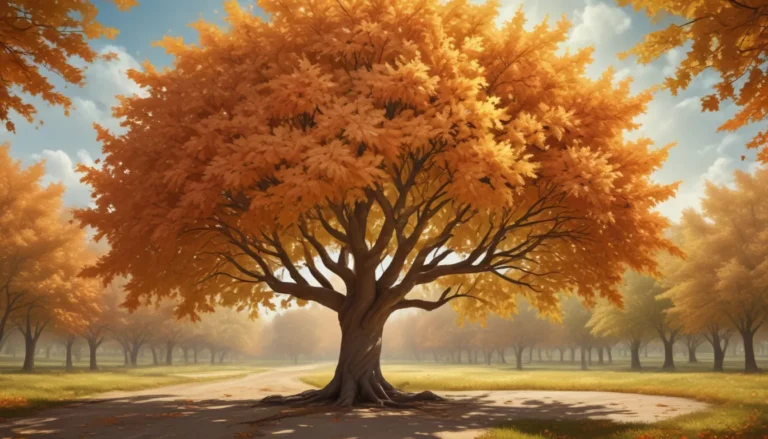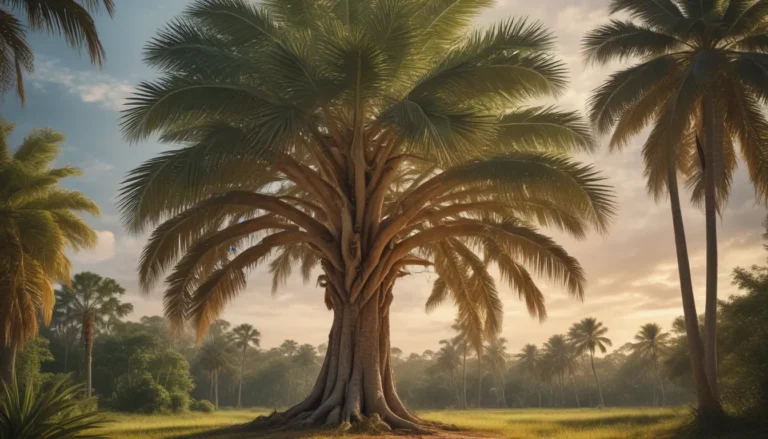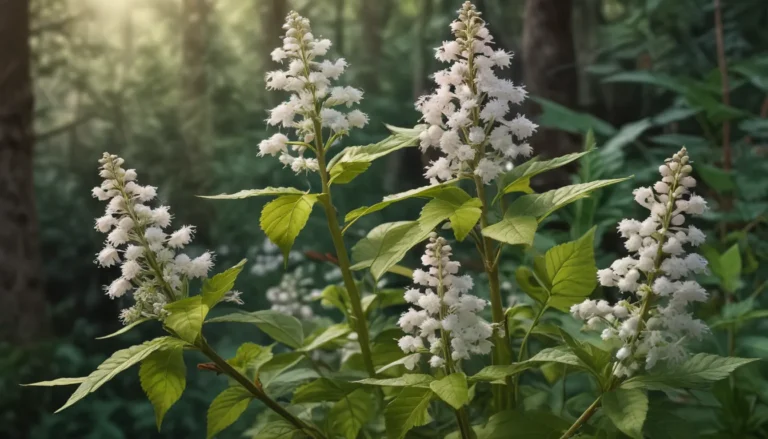The pictures we use in our articles might not show exactly what the words say. We choose these pictures to make you interested in reading more. The pictures work together with the words but don’t take their place. The words still tell you the important facts.
If you have ever wandered through the lush landscapes of North America, you may have encountered the enchanting pin cherry tree, scientifically known as Prunus pensylvanica. These magnificent trees, with their delicate white blossoms and vibrant red cherries, are a sight to behold. Not only are pin cherry trees a beautiful addition to the natural world, but they also play a vital role in the ecological balance of their habitats.
In this article, we will unravel 19 captivating facts about the pin cherry tree, shedding light on their unique characteristics, ecological importance, and cultural connections. Whether you are a nature enthusiast, a botany aficionado, or simply curious about the wonders of the natural world, join us on a journey to discover the fascinating world of pin cherry trees.
Key Takeaways:
- Pin cherry trees are small to medium-sized, with beautiful white flowers and red cherries that are essential for wildlife and ecological succession.
- They are rapid growers, forming extensive clonal colonies, and are used in land reclamation efforts.
- With cultural significance and symbolism of resilience, pin cherry trees are not only beautiful but also essential components of landscapes.
Unveiling the Mysteries of Pin Cherry Trees
Let's embark on an exploration of the enchanting pin cherry tree and uncover the intriguing facts that make them a cherished part of North America's diverse flora.
Pin Cherry Trees Are Native Treasures
- These majestic trees are indigenous to North America, thriving in various ecosystems, including forests, woodlands, and mountainsides.
- Belonging to the Rosaceae family, which also includes cherries, apples, and roses, pin cherry trees are an integral part of the botanical tapestry of the region.
A Glimpse into Their Nature
- Pin cherry trees typically reach heights of 30 to 50 feet, making them relatively small to medium-sized trees in the grand scheme of the forest.
- With the arrival of spring, these trees burst into a dazzling display of delicate white flowers, adding a touch of elegance to their surroundings.
Nourishment for the Wild
- The bright red cherries produced by pin cherry trees serve as a vital food source for a variety of wildlife, including birds and small mammals.
- Insects, such as caterpillars and beetles, can pose a threat to these trees, impacting their overall well-being.
The Cycle of Life
- Known for their rapid growth, pin cherry trees quickly establish themselves in disturbed areas and play a crucial role in ecological succession.
- Despite their resilience, these trees have relatively short lifespans, typically living for 20 to 40 years.
Medicinal Mystique
- Various parts of the pin cherry tree, including the bark and leaves, have been used in traditional medicine for treating ailments such as coughs and sore throats.
- Their ability to thrive in challenging environments, including nutrient-poor soils and harsh climates, showcases their resilience and adaptability.
Cultural Ties and Symbolism
- Pin cherry trees hold cultural significance for certain indigenous communities, who incorporate them into traditional practices and ceremonies.
- Seen as a symbol of resilience and adaptability, these trees reflect the enduring spirit of nature in adverse conditions.
Enriching the Ecosystem
- Pin cherry trees provide valuable habitat for a diverse array of wildlife, offering nesting sites for birds and shelter for small mammals.
- Due to their rapid growth and ability to colonize disturbed areas, these trees are often used in land reclamation projects to restore vegetation and stabilize soil.
Beauty in Diversity
- While the wood of pin cherry trees is not highly valued for timber due to its small size and crooked trunks, these trees are a prized addition to landscapes.
- With their graceful form, delicate flowers, and vibrant fruit, pin cherry trees enhance the natural beauty of parks, gardens, and forests.
Embracing Mother Nature’s Artistry
In conclusion, pin cherry trees are a testament to the intricate web of life in which they play a crucial role. From their historical uses by indigenous peoples to their contribution to wildlife habitat and ecosystem resilience, these trees embody the beauty and biodiversity of North American forests. As we continue to cherish and study these remarkable trees, we deepen our appreciation for their ecological importance and cultural significance.
FAQs
What are the main characteristics of pin cherry trees?
Pin cherry trees are small to medium-sized deciduous trees with slender trunks, bright red, sour cherries, delicate white blossoms, and serrated, ovate leaves, adding elegance to their surroundings.
Are pin cherries safe for human consumption?
While pin cherries are edible, they are quite sour and best enjoyed in moderation. It's important to note that the seeds and leaves contain cyanogenic compounds, so caution should be exercised when consuming them.
Join Us in the Journey of Discovery
Our commitment to delivering trustworthy and captivating content revolves around bringing you insights into the wonders of the natural world. Each fact shared on this site is contributed by real users, ensuring a wealth of diverse perspectives and information. As you explore with us, trust in our dedication to quality, authenticity, and a genuine passion for sharing the marvels of nature.






